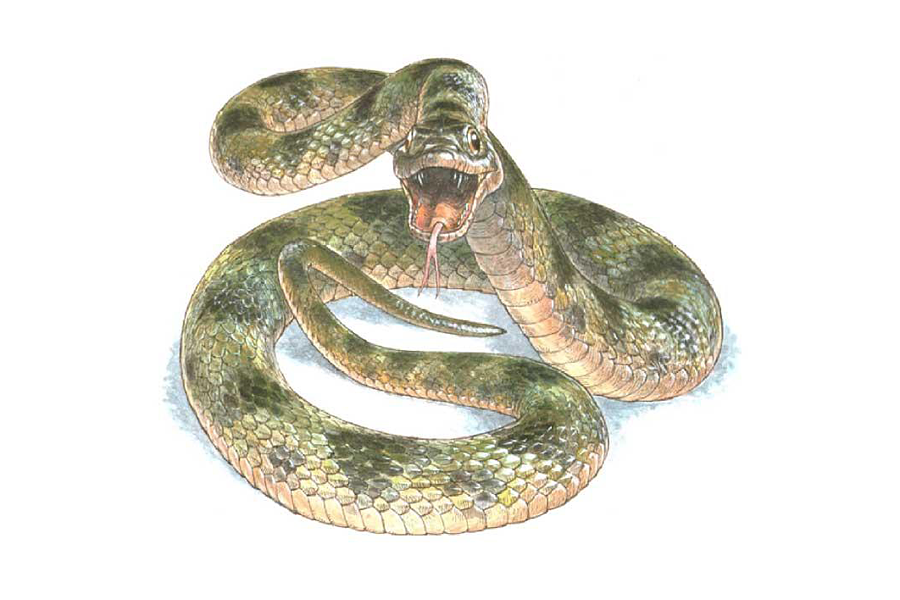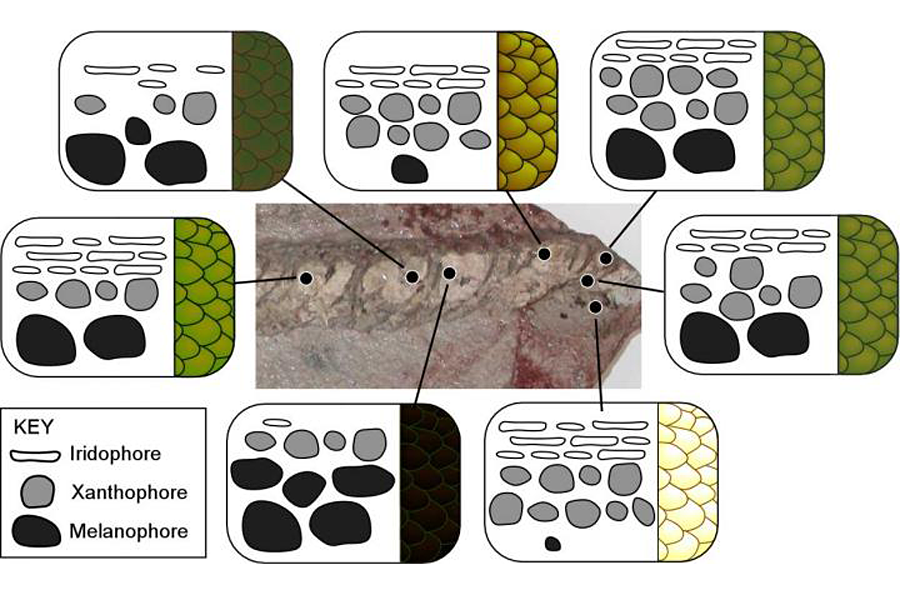How a 10-million-year-old snake helps bring extinct animals into full color
Loading...
The distant past has long been like an unused coloring book: the hues of extinct animals could only be imagined. Now scientists are beginning to fill in those blank spaces.
Researchers had previously found evidence of melanin, which gives something a black, brown or muddy red hue, in fossil vertebrates. That pigment doesn't dissolve easily so it's not surprising that it was the first evidence of color spotted in fossils.
But scientists' paintboxes may not be limited to melanin-produced colors anymore. Researchers say they have identified microscopic structures in the fossilized skin of a 10 million-year-old snake that might fill out the set, in a new paper published Thursday in the journal Current Biology.
"It's not just the melanin, the melanin has the highest resistance to decay," study lead author Maria E. McNamara of University College Cork tells The Christian Science Monitor in an interview. "Instead of just getting the stuff that hangs around the longest in a decaying animal, we actually have all of the color producing mechanisms preserved."
Inside a snake's skin, there are tiny physical structures associated with pigments. These cells, called chromatophores, include iridophores, xanthophores, and melanophores. Within those cells are itty-bitty granules that correspond to different hues.
When the researchers stuck the ancient specimen under a scanning electron microscope, they looked for shapes that looked like these color-producing structures. Based on the structures they spotted, they describe the coloration of the snake: its underside was pale, but its back and sides were green with brown-black and yellow-green splotches.
If they're right, this could be the first time all of these structures have been spotted in a vertebrate fossil. And it could open doors for further research.
"It would suggest that we can look at more than just melanin in the fossil record," Matthew Shawkey, an evolutionary biologist at Ghent University in Belgium who was not part of the study, tells the Monitor in a phone interview.
Determining the color of an extinct animal isn't just about being able to paint pretty pictures of it. "Fossil color can tell us about two very important aspects of an animal's biology," Dr. McNamara says. "It can tell us about their behavior and it can tell us about their physiology."
Animals use color for camouflage, to communicate warnings, for mating displays and other sorts of statements, she explains. Pigments also have a role inside the animal's body. Some help regulate the internal environment, others help protect the body from ultraviolet rays or toxins.
It's tricky for these pigment cells to be preserved, so what happened?
"Under certain chemical conditions, minerals start to actually grow on tissues of decaying animals," McNamara says. "It's something that happens very quickly, which is good for fossils because it means that tissues don't decay very much before they become replicated in these materials."
In this case, calcium phosphate grew on the carcass. As it formed, the mineral crystals replicated the shape of the original tissues, preserving their structure.
"The exceptional preservation of this skin opens up the exciting possibility of adding new colors to the palette of fossil reconstruction," Ryan Carney, a doctoral biology student at Brown University who was not part of the study, tells the Monitor in an email. "However, it would also be valuable to confirm the identities of these chromatophores with molecular analysis."
But, says McNamara, "The evidence we have is morphological evidence. It's extremely unlikely when tissues are mineralized that any original chemistry survived."
Dr. Shawkey is not convinced by the new study that the snake fossil holds structures that match those in living snakes. "To me they don't look at all alike," he says.
McNamara points out that some of the fossilized structures might not look like a perfect match because of their solubility. Iridophores, the structures linked to iridescence, contain purine crystals that are "highly soluble under conditions of low ph," she says. "And we know that calcium phosphate, the mineral that's preserving the skin, will only form at low ph."
Derek E. G. Briggs, a geologist at Yale University who was not part of the study but who has collaborated extensively with McNamara in the past, says he is confident in the new findings. "The quality of the preservation of this remarkable fossil reveals an unusual level of detail which makes the interpretation very secure," he writes in an email to the Monitor.








